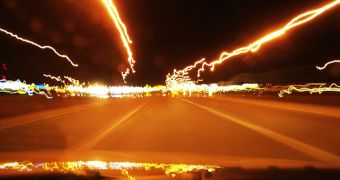Driving for two hours at night has the same effect as two alcoholic beverages, suggests an international team of researchers, who compared the effects of long nightly driving and driving under influence.
The National Safety Council warns that traffic death rates during the night are three times higher than during the day, but not many people are aware of the dangers of driving at night, nor know how to avoid them.
Driving skills are largely affected by sleepiness, but unlike driving under influence, drivers often do not admit the existence of this risk.
To better explain things, an international team of researchers from the Utrecht University (the Netherlands) and Université Bordeaux II (France), led by psychopharmacologist Joris Verster, PhD from Utrecht University, compared the effects of night-driving and drunk-driving.
The study subjects drove with no interruption on a public highway for several hours at night, and were asked to keep a constant speed and a steady lateral position.
The weaving of the car was continuously measured and driving instructors monitored the subjects' safety during the experiment.
After an average of two hours, the weaving of the car on the road resembled that observed in drivers with a blood concentration of 0,05%, the legal limit for driving a car in most European countries.
One more hour later (3 hours of night driving in total), the weaving was already comparable to the effects of drinking four alcoholic beverages.
“I hope this study gives drivers more awareness of the risk of prolonged driving,” said Verster, adding that “after two continuous hours of driving at night you should really take a break.”
The next step will be additional research to show the effects of long distance driving on professional drivers.
The downfall is that despite the very conclusive research, law enforcers do not have the proper methods of assessing driver sleepiness, yet.
This study was published recently in the Journal of Sleep Research.

 14 DAY TRIAL //
14 DAY TRIAL //